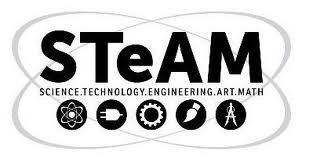Support Positive Images of Black STEM Students
 Two things are evident in American society today. For one, there are not many positive images of black people in mainstream media, especially black males. While there have been some recent victories in television, like Scandal, How To Get Away With Murder and Black-ish, most of what’s on TV today are reality shows awashed in the very worst stereotypes about African-Americans.
Two things are evident in American society today. For one, there are not many positive images of black people in mainstream media, especially black males. While there have been some recent victories in television, like Scandal, How To Get Away With Murder and Black-ish, most of what’s on TV today are reality shows awashed in the very worst stereotypes about African-Americans.
The other evident thing is that there is a lack of African-Americans in STEM careers. I am sure you all have heard all the discussions about having more racial and gender inclusion in Silicon Valley and other STEM sectors.
Well, here is an interesting thing I stumbled upon that attempts to deal with these two racial issues simultaneously.
Maryland assistant principal Ateya M. Ball-Lacy is the creator and executive producer of a new reality show she is trying to launch called HoodSmart: The Urban STEMulus Project.
This would be a reality show that takes its cues from MTV’s The Real World, where 15 African-American STEM students are put into a house and compete in a variety of science, technology, engineering, and math related challenges for the ultimate prize of a full college scholarship.
“There are so many dimensions to us as a black community and our experiences in America, and I started to wonder why no one was telling that story,” said Ball-Lacy to UrbanGeekz. “There has always been a focus on the negative parts. Through this revolutionary reality show, we intend to change the image of urban America by providing a platform for African American youth to observe, celebrate and ultimately emulate the academic prowess of their peers, all before a live national T.V. audience.”
I don’t know what the status is on this show and if it was picked up by a network. It doesn’t look like HoodSmart raised enough money on their Indiegogo campaign. I get the impression the creator is only looking to put this on traditional network or cable television. If I was her, I would actually just produce a video series that can be viewed on YouTube and build momentum from there. Either way, I hope HoodSmart gets the greenlight somewhere.
I am a strong believer in being the change I want to see in the world. So I guess I am doing my small part by presenting this on my blog this week. I know a lot of people who work in the media who follow this blog, and, maybe one of them will take an interest in HoodSmart…
Watch the trailer here:


